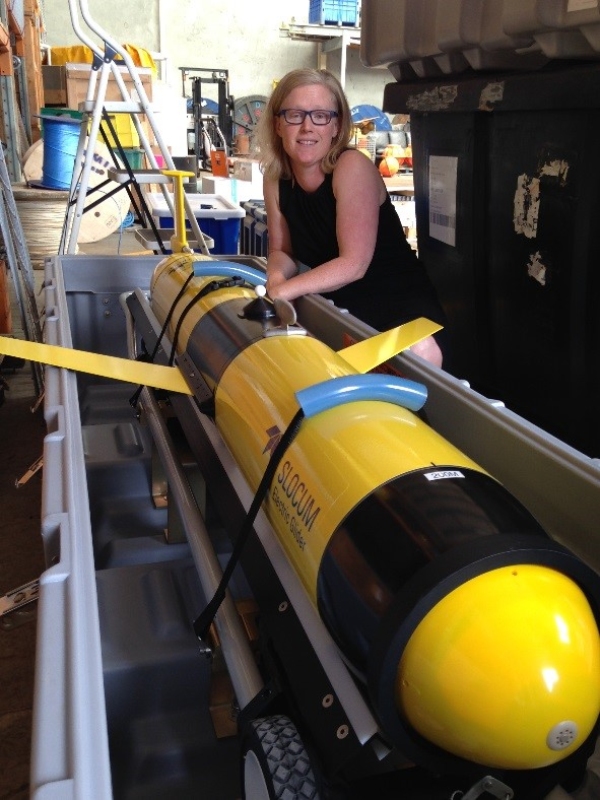National Institute of Water and Atmosphere coastal oceanographer Joanne O’Callaghan took delivery of the 1.5-metre long glider, which can carry a variety of sensors to measure temperature, salinity, light, oxygen and fluorescence under the surface of the ocean.
The Slocum Glider is one of about 500 around the world but is the first in New Zealand. The gliders are named after Joshua Slocum, the first man to sail alone around the world. The glider is designed to travel the oceans alone, like Captain Slocum, and will be initially deployed off the North-East region of New Zealand in autumn.
Unlike powered submarines, the glider does not use a propeller to move through the water. It moves by changing its buoyancy to glide up or down in the ocean. Wings on the glider convert vertical displacement into horizontal motion, resulting in a vertical saw-tooth dive pattern down to 200m, at a horizontal speed of about 1kmh. This efficient means of locomotion leaves most of the on-board battery power for operating the scientific instruments it carries. A glider deployment usually lasts about 30 days, during which time the glider will about 400km through the ocean.
Coastal oceanographer Joanne O’Callaghan says the data, transmitted via a phone call made during occasional surfacing, will be valuable for understanding the coastal shelf seas around New Zealand.
There have been satellites collecting measurements about the ocean’s surface for more than 30 years, but just as the weather is constantly changing above us, so is the ocean below us. We have very limited information on sub-surface variations in temperature, salinity, oxygen and biological parameters in water shallower than a few hundred metres – what we consider to be the Continental Shelf.
The underwater glider will help gather more data on the part of the ocean closest to where humans live, and those data will be accessible from a computer nearly instantly each time the glider surfaces and dials home.
But the glider needs a name, and NIWA has launched a competition on social media channels to name the glider and support the organisation’s ongoing commitment to leading scientific research of New Zealand’s water and atmosphere.
Entrants can visit niwa.co.nz/nameourglider to enter the competition and earn the chance to have their winning name printed on the bright yellow ocean glider.

